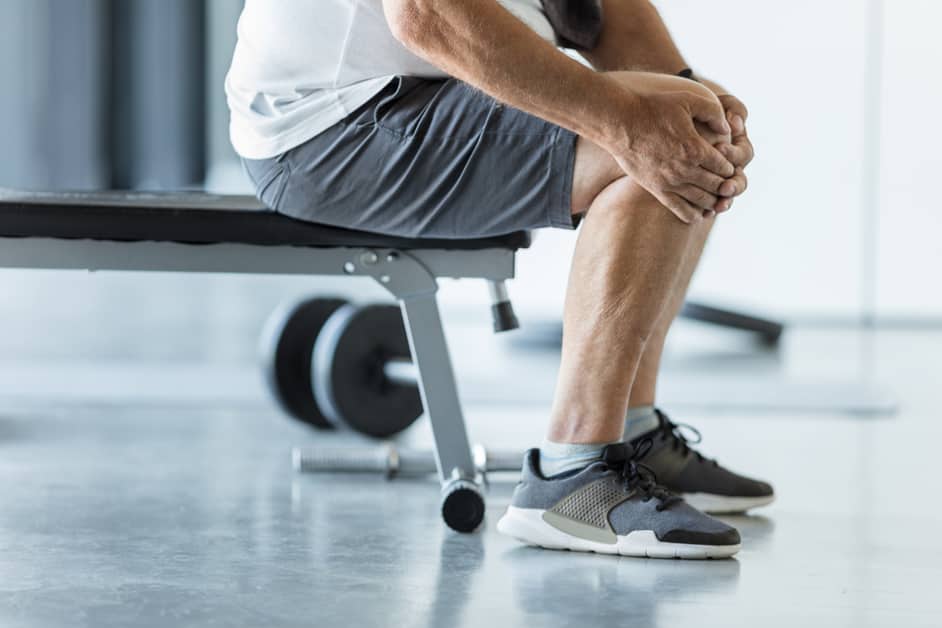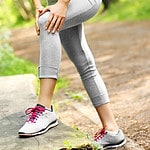Introduction
Knee pain is a common symptom for those enduring knee osteoarthritis. This is when the protective cartilage between the bones in the knee erodes with age, overuse or injury. Exercises can help manage the pain however it’s important to take precautions.
Using the correct technique and guidance, activities such as running, jumping and hopping can be done safely. Here are some tips to assist those with knee osteoarthritis when exercising effectively and safely:
Causes of Knee Pain
Knee pain is a widespread issue. Those with knee osteoarthritis are especially vulnerable. Causes may vary; from overuse injuries and direct impacts to aging.
Common causes are wear and tear, inflammation, misalignment, a weak patella, and a weak ligament. Let’s investigate these causes and learn how to prevent knee pain.
Poor technique
Exercising with poor technique can lead to stress and strain around the knee joint. This can cause knee pain. To avoid this, pay attention to your form and follow instructions from an instructor or trainer, if possible.
Good body alignment and posture is important to minimize strain on the knees. Incorrect alignment can make muscles work harder and add pressure onto the hip and leg muscles.
Staying flexible and strong can reduce pressure on certain parts of the body, including the knee joints. Focusing on technique encourages people to take responsibility for using good technique when exercising and movements that affect their joints – especially those relating to the knees.
Overuse
Knee pain from overuse can come from many activities. These can be everyday things, or exercises. Any activity that puts stress on the muscles, ligaments, and tendons around the knee can cause pain. This is called “overuse” since it puts extra strain on an area not used to it.
Common causes of overuse-related knee pain include:
- Running
- Biking
- Skiing
- Other sports like hiking or jogging on uneven terrain.
- Deep squats and leg presses
- High intensity activities
- Jumping
- Stair-climbing
To prevent injury, warm up and stretch before any activity. Pay attention to your body position and take breaks when needed. Strength training programs for the knees can help build strength around the joint, so the leg muscles are distributed better. Wear kneepads and thigh guards when playing contact sports like soccer or hockey to reduce outside forces on the knees.
Weak muscles
Weakened muscles around the knee can often cause knee pain during exercise. If untreated, it can become chronic and impair physical activity due to discomfort or fear of greater pain. Common muscle groups connected to knee osteoarthritis are the quadriceps in the front of the thigh, and the hamstrings and calf muscles in the back.
Strengthening exercises are key for managing knee pain. Squats, lunges, and calf raises can help build robust, stable muscles around the knee joint and improve strength. Having strong core muscles can also reduce pressure on the affected leg and provide support for movements that cause joint stress.
Stretching is great for keeping flexibility in stiff knees caused by arthritis. It reduces discomfort from activity-specific areas like deep bending or walking up and down stairs. Doing a few minutes of basic stretching each day can keep muscles limber and decrease tension on your joints. This is beneficial for avoiding injury when regularly exercising or doing daily activities that involve physical strain.
Poor posture
Good posture and joint alignment are essential to reduce knee pain while exercising. Poor posture can be detrimental, causing long-term damage to the muscles and joints in your legs, back, and neck. Even extended periods of standing, sitting, or kneeling in an incorrect and unbalanced alignment can cause fatigue and pain during physical activity. So, ensuring good posture throughout the day is key for preventing knee pain when engaging in exercise.
There are several components that contribute to healthy posture and help protect against injury:
- Feet: When standing, width of the feet should be hip-width apart. Weight should be equally distributed on both sides.
- Legs: Legs should remain straight with no tension or locking of knees or hips.
- Hips: Stand with your hips in a neutral position – between slumped over and arched backward. Don’t arch too far upward or press downward into a slouchy position.
- Spine: Try to keep your spine as upright as possible. Draw your abdominal muscles in gently towards your spine (avoid slouching).
- Shoulders: Relax them, down away from the ears, and level with one another (no hunching around the neck).
- Neck: Let the head sit atop the vertebrae. When looking straight ahead, ears should be above the shoulders – not too close to the chest nor far outstretched away from it. Somewhere in between the two extremes.
Prevention Strategies
Knee osteoarthritis is a frequent cause of knee pain that can disrupt a person’s quality of life. Fortunately, there are tactics to help reduce this kind of knee discomfort during workouts.
This segment will explain all the primary strategies for avoiding and dealing with knee pain while exercising for those with this problem:
Warm-up and cool down
Beginning your workout with a warm-up and finishing with a cool down is essential. It gives the body time to adjust. During the warm-up, more oxygen reaches the muscles. Light jogging, walking, or dynamic stretches are good warm-ups. After exercising, a cool down helps bring the heart rate back. Static stretches like gentle hamstring stretches can also be included.
For people with knee osteoarthritis, low impact exercises are beneficial. They improve balance and stability without worsening knee pain. Examples include water aerobics, stationary bike riding, and swimming. Low impact exercises increase heart rate, strength, and endurance.
Strengthen supporting muscles
Strengthening the muscles around your knee can help protect it during exercise. Ask a physical therapist or kinesiologist for guidance on exercises. These exercises can help:
- Clamshells: Lie on your side with both knees bent and feet together. Lift one bent knee as far as you can without moving your hips or losing stability. Do this 10 times, 3 times a day.
- Quadriceps sets: Sit on a chair. Tighten the quadriceps muscles at the front of the thigh, without bending or extending your leg. Hold for 5 seconds. Do this 10 times, 3 times a day.
- Straight leg raises: Lie flat with legs extended straight out. Raise one leg several inches off the floor. Hold for 5 seconds. Do 10 reps, 2-3 times each day on each leg.
These exercises should cause no pain if done correctly. Stop if painful swelling occurs. Talk to a healthcare professional before starting an exercise program for OA-related knee pain!
Adjust exercise intensity
Adjusting exercise intensity is key for managing knee pain from osteoarthritis. The intensity should start low and increase as the condition improves. Exercises with low to moderate impact, like swimming, cycling on a stationary bike, or walking are preferred. When strength training with knee pain, don’t repeat the same motion too many times and lower the resistance if it starts to hurt.
Also, avoid activities with abrupt, quick motions that stress the knees, like running or jumping. Get advice from a physical therapist or fitness specialist on the right intensity for your condition and fitness level. They can also help you do activities safely, e.g. how to walk or do squats and lunges without causing knee strain and pain.
Use proper technique
It is important to use good form when exercising. An experienced coach or physiotherapist can tell you the correct positions and technique. Focus on keeping neutral joint angles in the hips, knees, and spine, and use body mechanics for maximum stabilization.
Understand your body’s limitations before working out. Know your joint range of motion, coordination, flexibility, and strength. Wear a brace to reduce knee pain during exercise if needed.
When strength training with weights, make sure the load is suitable for the person’s fitness level. Correct form should come first before attempting more advanced exercises or heavier weights. Have a spotter when performing
- heavy lifts
- functional activities
- jumping activities
.
Wear supportive shoes
Wear shoes for support! Get your feet in proper alignment during exercise. Choose shoes with cushioning and arch support. Make sure they fit snugly to hold the heel in place. Look for shoes specifically designed to promote stability and comfort during physical activity. When exercising, lace or velcro them to keep your ankle, foot and knee aligned.
Replace your exercise shoes after 300-400 miles of use. Your aging joints will thank you for the best support!
Rest when needed
It’s vital for wellbeing to rest when needed. Acknowledge when your body needs rest, and give yourself permission. Resting helps reduce fatigue, tension, stress and anxiety. Try for 7-9 hours of sleep nightly. If you feel tired or can’t focus, take a nap or mini-breaks throughout the day.
Additionally, prioritize quality downtime with friends and family. Do activities that recharge, not deplete, energy.
Conclusion
To wrap up, exercise is essential for those with knee osteoarthritis. Do low-impact activities such as yoga, swimming, and biking to minimize the danger of knee pain during exercise. For extra steadiness, use supports like braces and fitness bands. If you experience lingering soreness or decreased range of motion in your knees, consult a physical or occupational therapist.
Moreover, heed your body’s warnings and don’t push too much as this can intensify existing knee pain. By adhering to these tips, you can exercise without putting too much strain on your knees and stop long-term damage from osteoarthritis.
Frequently Asked Questions
Q: What are the best exercises to prevent knee pain?
A: Low-impact exercises, such as swimming, cycling, and water aerobics, are great for people with knee osteoarthritis. Strengthening exercises, such as weight-bearing exercises and resistance exercises, are also beneficial. It is important to focus on strengthening the muscles surrounding the knee to reduce stress on the joint.
Q: What tips can I use to help prevent knee pain during exercise?
A: Warm up and stretch before any exercise. Make sure to use proper form when exercising and start with low intensity. Increase intensity gradually, and consider using support braces or wraps for additional stability. Take frequent breaks and stop exercising if you experience any pain or discomfort.
Q: What should I do if I experience knee pain during exercise?
A: If you experience any pain or discomfort during exercise, it is important to stop immediately and contact your doctor. They can help determine the cause of the pain and recommend the best course of treatment.





